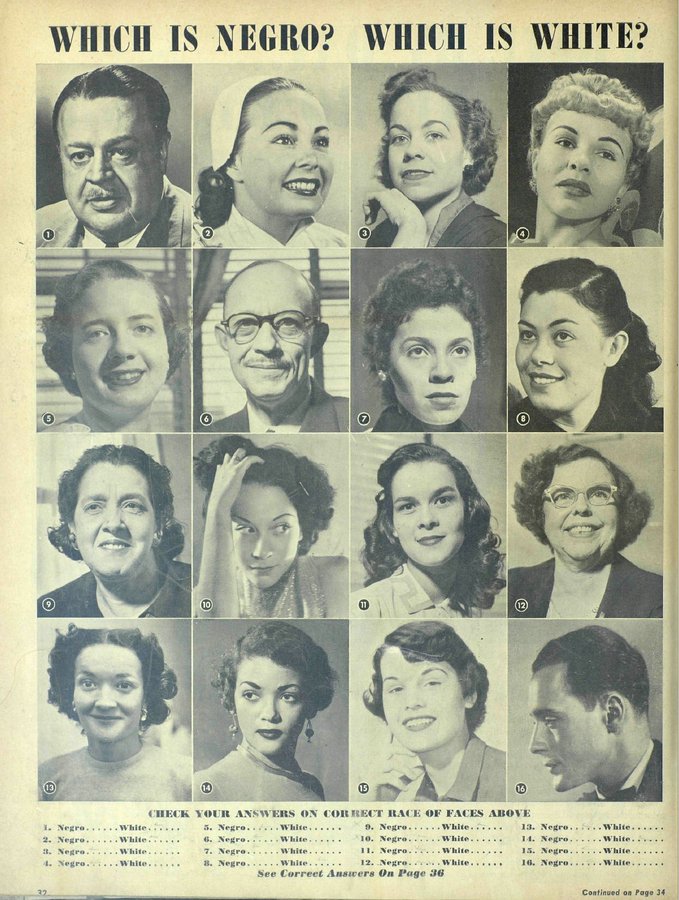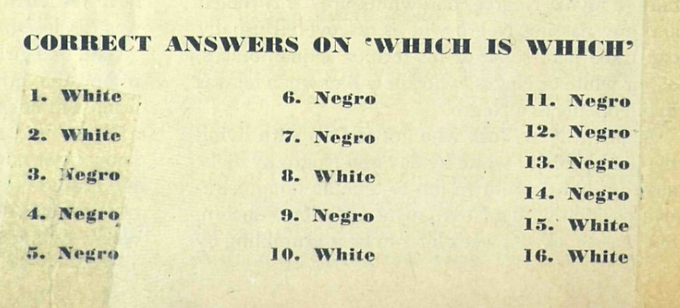Ebony magazine rolled out a quiz in April 1952 that asked, “WHICH ONE IS NEGRO? WHICH IS WHITE?” How many can you guess correctly? (Answers at the end of the blog.)

From Essence.com: Passing follows the story of two Black women, former childhood friends Irene Redfield (Thompson) and Clare Kendry (Negga), both of whom are able to convincingly ‘pass’ as white, each choosing to live on opposite sides of the color line during the Harlem Renaissance in the late 1920s New York. After being reunited by a chance encounter one Summer afternoon, Irene reluctantly allows Clare into her home, where she ingratiates herself to Irene’s husband (André Holland) and family, and friends.
As their lives become more deeply enmeshed, Irene finds her stable existence rocked by Clare, turning the film into “a riveting examination of obsession, repression and the lies people tell themselves and others to protect their carefully constructed realities,” via Netflix.
The film premiered to grand acclaim at the 2021 Sundance Film Festival. Its source material, the 1929 novel of the same name by author Nella Larsen, is still lauded by literature scholars to this day due to its complex and quite ahead-of-its-time examination of colorism, gender roles, race, and sexual identity.
Passing hits select theaters on October 27 and streaming via Netflix on November 10. Read more HERE and HERE.
Who is Nella Larsen?

Larsen’s immigrant parents — Mary Hanson, from Denmark, and Peter Walker, from the Danish West Indies — had settled in a mostly white, working-class neighborhood in Chicago, a city that was rapidly growing and segregating by the time Larsen was born on April 13, 1891.
Two years later, Walker disappeared, leaving Hanson alone with the couple’s young daughter. In his absence, Hanson married a fellow Dane, Peter Larsen, with whom she had another daughter, Anna.
By all appearances, the family was white. But Nella Larsen was different, something that would come to inspire her fiction — celebrated during the Harlem Renaissance, forgotten by midcentury, and rediscovered to be read today in American literature and black studies courses.
Despite the controversy, in 1930 she became the first African-American woman to receive a Guggenheim Fellowship. She used the grant, worth roughly $2,500 at the time, to pay for a period as an artistic expatriate in Europe.
Read the entire obituary HERE.
Answers to 1952 Ebony quiz “Which is Negro? Which is White?”
